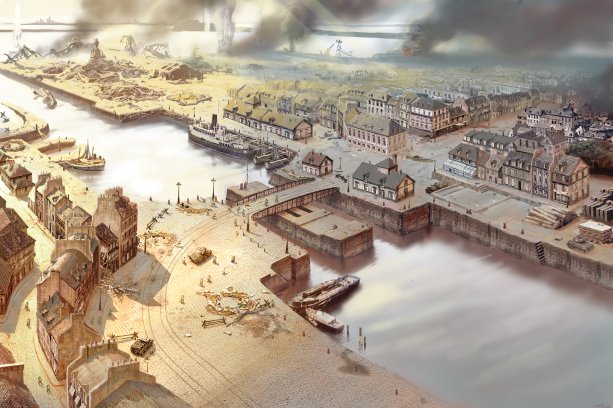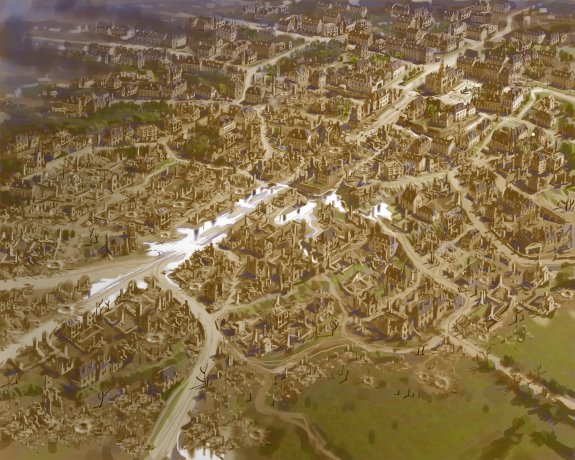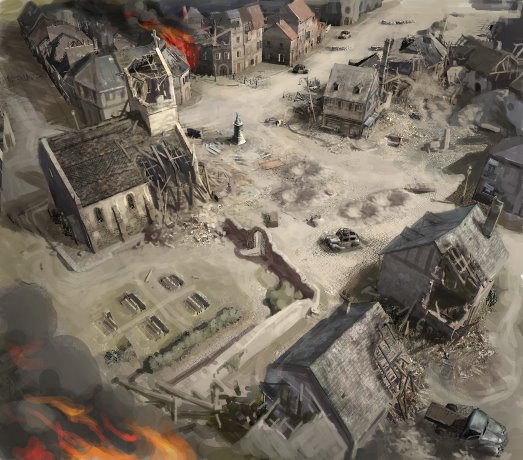Architecture’s newest frontier is inside your gaming console. Video games are increasingly sophisticated with a wide range of disciplines needed to recreate real-world artifacts and environments inside a console or computer. In some games, construction methods and architectural history matter just as much as firepower.
Vancouver-based Relic Entertainment is best known for Company of Heroes, a real-time strategy game where players command allied forces through key Second World War battles.
To simulate large-scale battles, designers and artists need to first build and then destroy French villages, vital infrastructure and even the German Reichstag. Behind the pixelated pyrotechnics, there are real architectural principles at work.
Relic Entertainment principal technical artist Wayne Wong-Chong has a background in not only art but the principles of construction, as a graduate of the British Columbia Institute of Technology’s building technology program.
"I designed in CAD, but it was definitely pre-BIM (Building Information Modeling)," he said.
To recreate historical buildings, tools as diverse as old photographs, newsreel footage and Google Earth are used, said Wong-Chong, but real-world experience is preferable.
"You want to respect these buildings, so you get photos and document them. A lot of what’s in the game has to be architecturally sound, as well as retaining the scale of people versus buildings," Wong-Chong said. Other principles such as silhouette and lines of action also apply to in-game architecture.
"But there’s a sliding scale of scale," he added. "Smaller buildings are true to life, but something like the Reichstag is at 5/8ths scale, so it doesn’t feel like a ‘doll’s house’ version of the building."
Game director Quinn Duffy also has a background in history, geography and urban planning. Game creators are dealing with many of the same problems as urban planners and architects, but for different reasons, he said. Unlike the real world, damage and destruction are a key part of the design process.
"You want to simulate damage like gunfire or a tank driving into something, punching a hole in a wall and going in and out of a building," Duffy said.
As players inflict damage, the structure of a building or other objects is gradually revealed until it collapses, Wong-Chong said.
"Materials in virtual buildings also burn at different rates, which adds to the narrative of the world," he added.
In Company of Heroes 2, the player defends Stalingrad. Relic team members travelled to Russia to document different structures before replicating them in the game.
"You get a better sense of materials and properties, which you don’t always get from reference," Wong-Chong said.
"There’s certainly building style and some of the construction. There’s a lot more wood in Russian buildings," Duffy added, noting to recreate historical buildings, one has to work backwards.
"You capture what it used to be, not what it is now. It’s already blown up and we have to figure out how to recreate it."
Historical and architectural accuracy is important, but at heart the game has to be fun to play.
"We need to retain authenticity and verisimilitude, but we also need room for the game to play, so we create a background facade and capture representative elements (of the environment)," Duffy said. "Real architecture doesn’t necessarily mean a great game."
"It’s part urban planning, part architecture and part stagecraft," Wong-Chong added.

1/3
Games like Company of Heroes 2 use architectural and urban planning principles to recreate and destroy historical settings like Second World War-era France or the battle of Stalingrad.
Photo: Relic Entertainment
2/3
Photo: Relic Entertainment
3/3
Behind the pixelated pyrotechnics











Recent Comments
comments for this post are closed